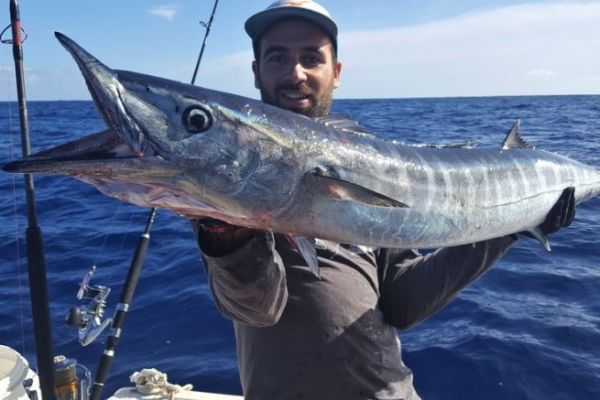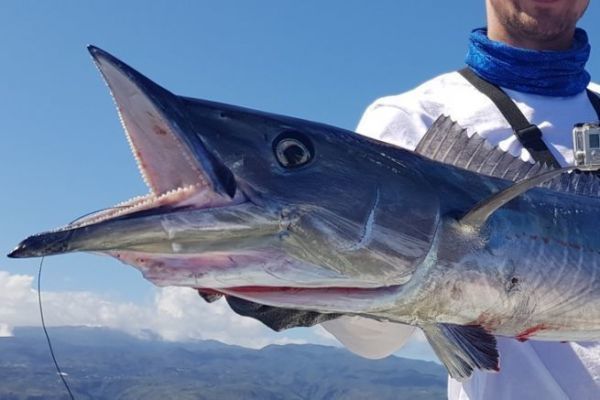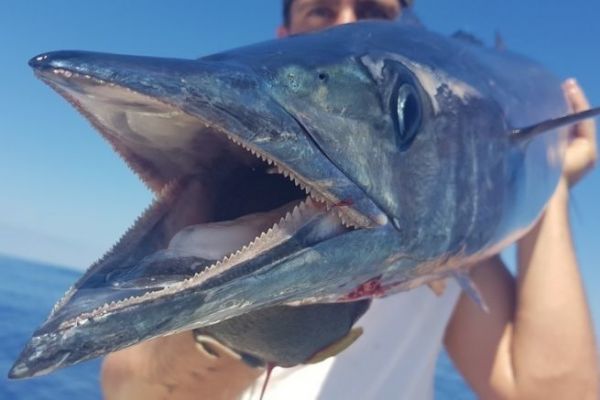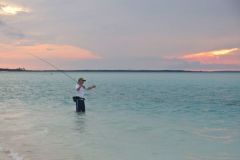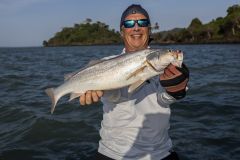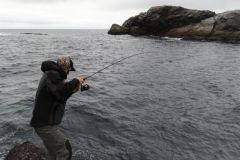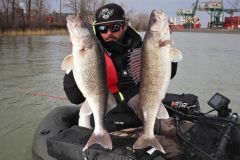A predator par excellence

The wahoo can be fished close to shore on bottoms of 15 to 100 m, as well as offshore in the deep blue or around FADs (Fish Aggregating Devices). Often living close to the surface, its diet is varied: small tuna, bonito, squid, flying fish and any other species it may find along the way.
Extremely fast, the wahoo can reach peak speeds of over 80km/h! Equipped with a scissor-like jaw and razor-sharp teeth, it attacks its prey from the rear, cutting off its tail before returning to finish its meal. The peculiarity of its jaws and its danger make it a fish to be handled with the utmost care. Unfortunately, numerous accidents have already occurred, notably in the United States, where a fisherman was bitten in the throat while handling the fish for a photo.
Wahoo fishing on Reunion Island
Around Reunion Island, we notice passing wahoos (or Banana Tuna) moving in large schools around September. These unsuspecting fish are much easier to lure, generally weighing between 6 and 10 kg, and it's not uncommon to see several departing at the same time. Some of them will stay around the island and become much larger (over 30 kg) but also much more wary, making them extremely interesting fish to track.
And the fight?

This is where things start to get interesting! The starts are dazzling, and to see a reel empty at such speed is an experience you really must have at least once in your fishing life. Once the rush is over, things get tough...
Firstly, it's capable of huge candles. I myself had the opportunity to see a wahoo rise more than 3 m from the surface, only to fall back onto my hood, so these images will remain with me forever! But it also has a habit of accelerating towards the boat during the fight, only to change direction abruptly, resulting in numerous breaks, cuts and stalls.
As you can see, it's a wonderful fish, but at the same time a technical one to fish, offering extreme sensations that will put your skills to the test!



